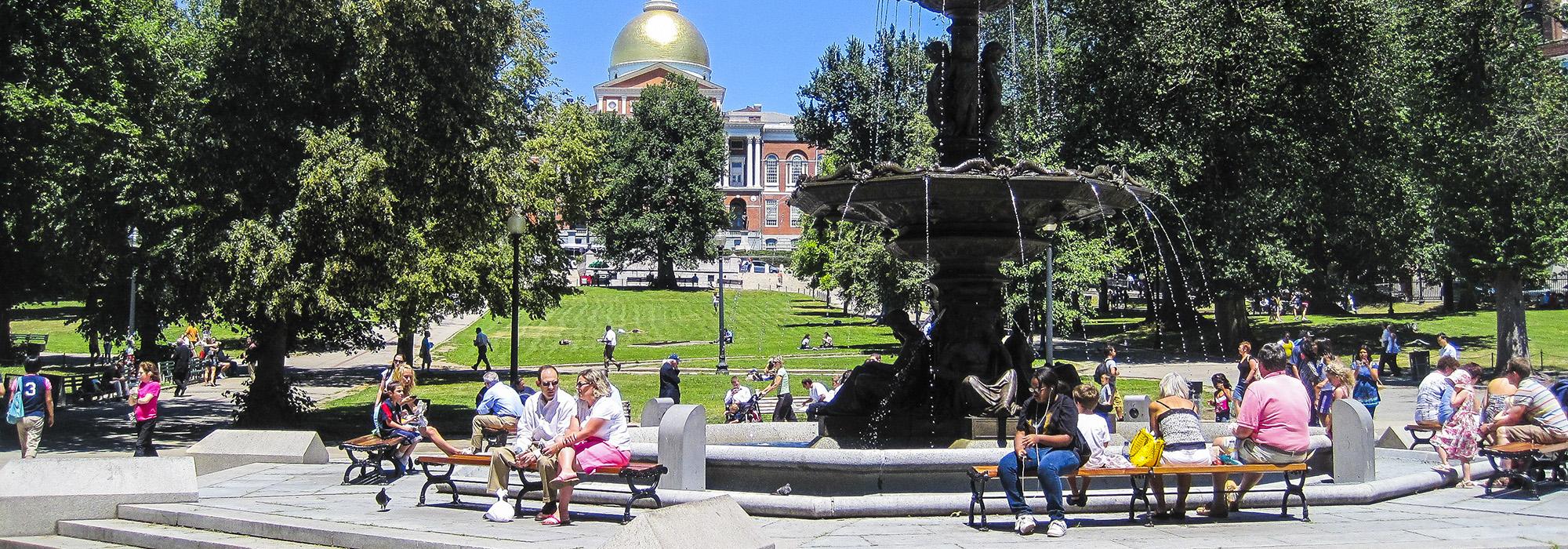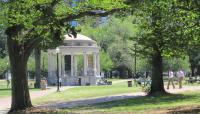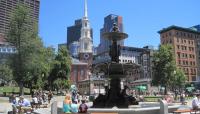Landscape Information
The Boston Common, along with the Public Garden and Commonwealth Avenue, served as a precursor to the Boston Park System, designed between 1878 and 1895. As in many early New England towns, Boston’s treeless common land, used for pasturing cows, also accommodated pedestrian foot traffic. One of the city’s oldest cemeteries, The Central Burying Ground, was established here in 1756. In 1836 an ornamental fence was constructed around its perimeter and the park’s circulation network was articulated to include pedestrian malls and promenades. The transformation to a wooded park, lined with double and single rows of canopy trees, happened in the late nineteenth century. The nation’s first subway system opened here in 1897.
The 50-acre park, located at the foot of the State House, has many designers. The Olmsted Brothers firm oversaw considerable renovation between 1910 and 1913 while Arthur Shurcliff prepared a general plan in the 1920s. Significant landscape features include the Brewster Fountain by Paul Lienard; the Soldiers and Sailors Monument by Martin Milmore; and the Parkman Bandstand, and Parkman Plaza by Schurcliff & Merrill.
In 1970 local community members established the Friends of the Public Garden, in an effort to revitalize Boston’s parks, including the Common. In 1990 the Boston Common Management Plan by Walker-Kluesing Design Group was completed, and updated in 1996. Pressley Associates rehabilitated the Common’s Brewer Fountain Plaza, Lafayette Mall, Parkman Plaza and Tremont Street Mall between 2012 and 2018. The Common was listed in the National Register of Historic Places in 1972 and was listed as a National Historic Landmark in 1987. In 2019, the city launched a master plan for the Boston Common in collaboration with the Friends of the Public Garden; Weston & Sampson design studio is leading the master planning efforts.
















